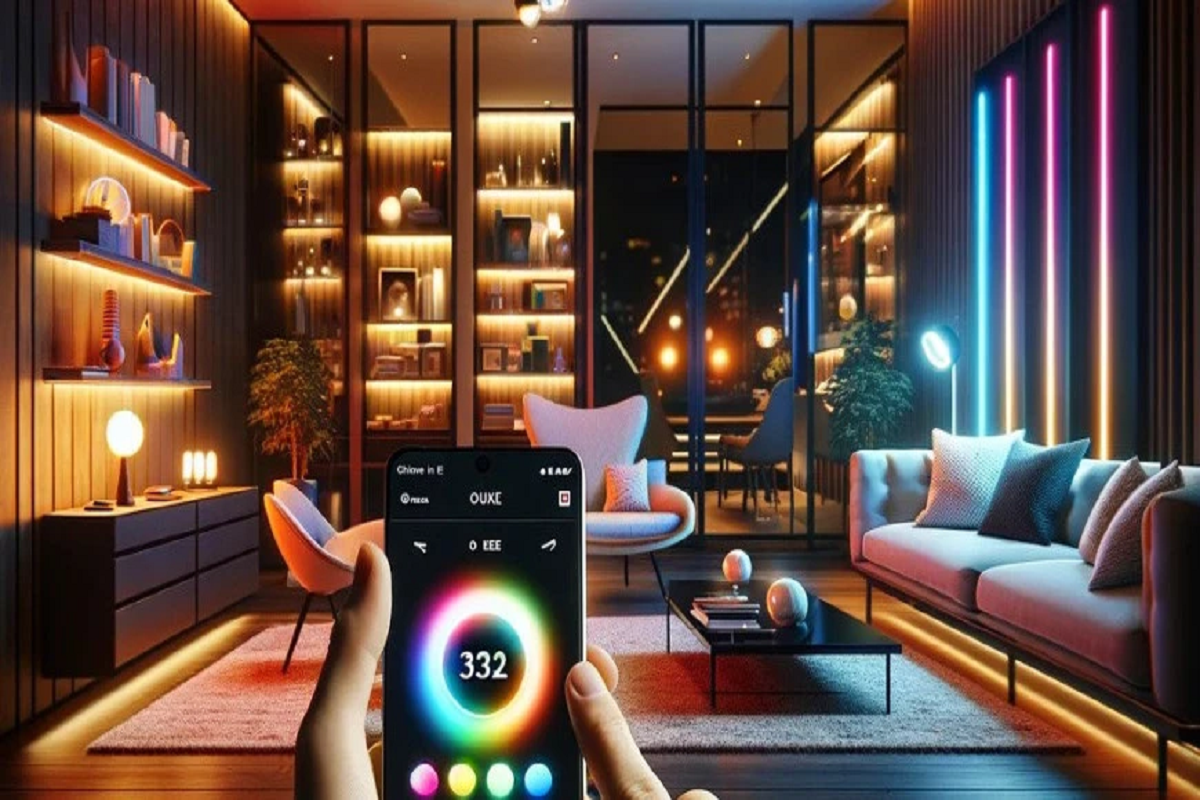Introduction
LEDs have transformed the lighting business by providing energy-efficient, long-lasting, and adaptable lighting solutions for a variety of applications. This article will look at the technical features of LEDs, their wiring and circuits, and their widespread use in residential illumination, particularly in bedrooms.
Ⅰ LED Basics and Symbols
LEDs are semiconductor devices that produce light when an electric current flows through them. In electronic diagrams, an LED is generally represented by a symbol that resembles a diode with two arrows going outward, representing light emission. This symbol is essential for interpreting LED circuit designs and wiring schematics.
Ⅱ LED Wiring and Circuit Diagrams

Simple LED Circuit
When working with LEDs, it is critical to understand the wiring requirements. A basic LED circuit contains:
1. Power source (battery, power supply)
2. LED
3. Current-limiting resistor
The current-limiting resistor is critical because it protects the LED from overcurrent, which could damage or destroy the device. The resistor value is determined by the LED's specifications as well as the voltage of the power supply.
A basic LED wiring schematic would display:
1. The positive terminal of the power source is connected to the anode (longer leg) of the LED via a resistor.
2. The cathode (shorter leg) of the LED is directly connected to the negative terminal of the power source.
For more complicated applications, such as LED strips or multiple LEDs, the wiring diagram may incorporate control and power management components such as transistors, capacitors, or integrated circuits (ICs).
Multi-LED circuit design - LED Parallel Circuits
Ⅲ LED Circuits for Home Lighting
When it comes to residential illumination, LED circuits can be more complicated. For example, LED light strips for room lighting frequently include:
1. A power supply unit that converts AC into DC.
2. A controller for dimming and changing colors (for RGB strips).
3. Wire many LEDs in series or parallel configuration.
These circuits may also have properties such as:
- Dimming control using Pulse Width Modulation (PWM)
- Color mixing circuits for RGB LEDs.
- Bluetooth or Wi-Fi modules for intelligent control.
Understanding these circuit components is critical for DIYers wishing to install or alter LED lighting in their houses.

Ⅳ LED Lights for Room and Bedroom Applications
LED lighting is becoming increasingly popular for home use, notably in bedrooms and living spaces. The advantages of LED lighting in these applications include:
1. Energy efficiency: LEDs require less power than traditional lighting choices.
2. Long lifespan: High-quality LED lights can endure for years, reducing the need for frequent replacements.
3. Versatility: LEDs come in a range of colors and can be dimmed or altered.
4. Low heat emission: LEDs produce less heat, making them safer and more comfortable for bedtime use.
Ⅴ LED Light Strips for Room Ambiance
LED light strips have grown in favor as room illumination due to their versatility and ease of installation. These strips can be used to make:
- Accent lighting for TVs and furniture.
- Kitchen under-cabinet lighting
- Cove lighting for indirect illumination
- Colorful ambient lighting for recreation areas.
When selecting LED light strips for a space, consider the following factors:
- Color temperature: warm white, cold white, or RGB.
- Brightness (lumens/meter)
- Length and Cutability
- Adhesive backing quality
- Control options (remote, app-based, or voice-activated)
Ⅵ Best LED Lights for Bedroom
Choosing the best LED lights for a bedroom requires considering numerous factors:
1. Color temperature: Warm white (2700K-3000K) is frequently recommended for bedrooms since it produces a warm environment.
2. Dimmability: Adjustable brightness is vital for setting the appropriate ambiance and for evening use.
3. Color options: Some individuals like lights that can change colors for different moods or activities.
4. Smart features: Integration with smart home systems can provide easy control and automation.
5. Installation options include ceiling fittings, table lights, floor lamps, and LED strips.
Some common LED lighting alternatives for bedrooms include:
- Philips Hue and LIFX smart LED bulbs
- Remote-controlled LED strip lights
- Dimmable LED ceiling fittings
- LED reading lamps with variable color temperature
It's crucial to take the bedroom's general layout and functionality into account when choosing LED lighting for the area. As an illustration:
- Task lighting: Concentrated LED lights for workspaces or places to read
- Ambient lighting: LED lighting that is gentle and diffused to light the entire space.
- Accent lighting: Using LED strips or spotlights to draw attention to architectural details or artwork
Ⅶ Installation and Safety Considerations
LED lights are generally safe and simple to install, but there are a few things to keep in mind:
1. Electrical safety: For complicated installations, always seek professional advice and adhere to correct wiring procedures.
2. Power requirements: Verify that the overall wattage of your LED array can be powered by your power supply.
3. Heat dissipation: Despite the fact that LEDs emit less heat than conventional bulbs, sufficient ventilation is nevertheless necessary, particularly for high-power applications.
4. Comfort of the eyes: Use diffusers to provide a softer light and stay away from glaring LED lights.
5. Electromagnetic interference (EMI): Select high-quality items since certain LED drivers may interfere with radio or Wi-Fi communications.
Ⅷ Future of LED Lighting
As LED technology develops further, we should anticipate seeing:
- Reduced expenses and increased efficiency
- More authentic color reproduction and natural light characteristics
- Internet of Things (IoT) integration for more intelligent home automation
- Novel designs and form factors
- Developments in lighting that is focused on humans to support circadian rhythms
Ⅸ Conclusion
LED lighting provides energy-efficient, adaptive, and customizable solutions that have revolutionized how houses are lit. This technology provides numerous options for upgrading living spaces, ranging from selecting the best-LED lights for bedrooms to understanding basic LED wiring schematics. LEDs will undoubtedly become increasingly significant in the way we light and use our homes as technology advances.
A basic understanding of LED technology and its applications can help you make well-informed decisions and create the ideal lighting environment for your needs, whether you're a do-it-yourself enthusiast looking to install LED strips in your room or simply looking for the best lighting for your bedroom.
Ⅹ FAQ
1. Are LED strips good for lighting?
If you're working with low voltages, hooking things up backwards is unlikely to cause damage. LEDs are electrically fragile. This means you can't simply buy an LED and connect it directly to a battery.
2. Is it OK to leave LED strip lights on all night?
The LED strip light emits very little heat, unlike incandescent lights. So, is it safe to leave led strip lights on overnight? Yes, in most cases. Because they use less electricity and produce less heat, the risk of overheating or causing any safety risks is considerably lower.
3. What is the best LED bulb wattage for bedroom?
For example, a 9-watt LED bulb can replace a 60-watt incandescent bulb. Therefore, for a 180-square-foot bedroom, you will only need 34 watts using LED bulbs or integrated LED fixtures. This energy saving helps reduce electricity costs while creating an atmosphere conducive to relaxation and restorative sleep.
4. Can I connect a LED directly to a battery?
If you're working with low voltages, hooking things up backward is unlikely to cause damage. LEDs are electrically fragile. You can't simply buy an LED and connect it directly to a battery.
5. How to create a LED circuit?
The most basic LED circuit is sandwiching the legs around a coin cell battery. This is also a handy technique to identify the LED's positive and negative legs because it only lights up one way. That's because LEDs are diodes, which allow electricity to flow in one direction but not the other.

